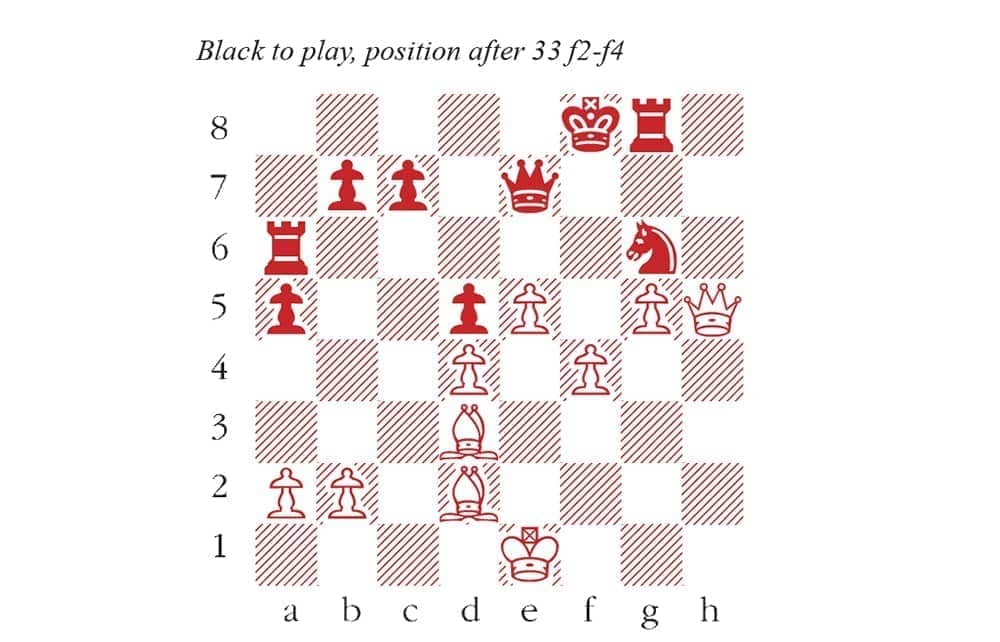There are lessons in chess that cannot be learned from a book. One lands, from time to time, in a position which amounts to a trial by fire – a test of conviction as much as skill. The experience of such a game can stay with you for ever, radically altering your sense of what is possible at the chessboard.
At least, I suspect that is what 13-year-old Shreyas Royal went through last month, when he faced the Georgian grandmaster Baadur Jobava in the first round of the European Individual Championship in Slovenia. Jobava’s peak rating placed him in the world’s top 20, so this was a David and Goliath pairing where at the outset the youngster had nothing to lose. Jobava is a brilliant player – sometimes a little too brilliant – and in this game he was moved to sacrifice a whole rook in the early middlegame. The concept was clear – Royal stood to be checkmated down the h-file unless he ran the gauntlet with his king, venturing into the middle of the board. Risky as this was, Royal rightly went for it and he must have sensed, at some point, that Jobava had overplayed his hand. In my experience, that’s when the psychological calculus flips, and ‘nothing to lose’ gives way to a tantalising prospect of victory.
Jobava had overdone it, but that didn’t mean he was done for. His attack with queen, bishops and an armada of pawns was not easily extinguished, and any moment of carelessness could be decisive. Many a grandmaster would be bamboozled, but Royal kept his cool. He could not quite refute the attack, but he lived to tell the tale – a tremendous achievement against a ferocious attacking player.
Baadur Jobava-Shreyas Royal
European Individual Championship, March 22
1 e4 e5 2 Nf3 Nc6 3 Bc4 Bc5 4 c3 Nf6 5 d4 exd4 6 e5 d5 7 Be2 Ne4 8 cxd4 Bb6 9 Nc3 O-O 10 Be3 Bg4 11 h3 Bh5 12 Rc1 Ne7 13 g4 Bg6 14 Ng5 Introducing Jobava’s ambitious idea. Nxc3 15 Rxc3 h6 16 h4 hxg5 17 hxg5 Ba5 18 Qc1 f6 Correctly sensing the urgency of the situation. Too naive is 18… Bxc3+ 19 Qxc3, which portends Be3-d2 and Qc3-h3-h8 mate. 19 gxf6 gxf6 20 Bd2 Bxc3 21 Bxc3 Kf7 22 Qf4 Ke6 23 Rh6 a5 This important move rules out Bc3-b4 24 Rxg6 Nxg6 25 Qf5+ Kf7 26 Bd3 Rg8 27 g5 Nf8 28 Bd2 Qe7 29 Qf3 f5 30 Qh5+ Ng6 31 Bxf5 Ra6 32 Bd3 Kf8 33 f4 (see diagram) c5 34 Qh6+ Qg7 35 Qh3 Rc6 36 Bxg6 Qxg6 37 f5 Qg7 38 g6 Rxg6 An absolutely natural reaction to those pawns, but the computer prefers to pre-empt Be3-h6 with the cold-blooded 38…Ke8. 39 fxg6 Qxg6 40 Qc8+ Kg7 41 Qxb7+ Kh8 42 Qxd5 Qg1+ The counterattack arrives, but there is no mate to be found. 43 Ke2 Rg2+ 44 Kd3 Qf1+ 45 Kc2 Qf5+ 46 Kc3 Qh3+ 47 Kc2 Qf5+ 48 Kc3 Rg3+ 49 Kc4 Qd3+ 50 Kxc5 Qxd2 51 Qd8+ Rg8 52 Qh4+ Kg7 53 Qg4+ Kh7 54 Qe4+ Rg6 55 e6 Qb4+ 56 Kc6 Qc4+ 57 Kd6 Qb4+ 58 Kc6 Qc4+ Draw agreed






Comments